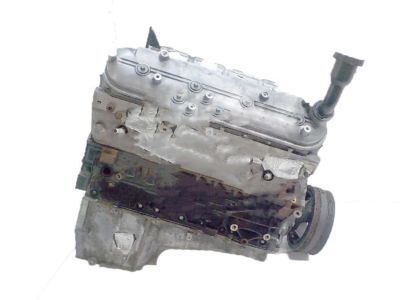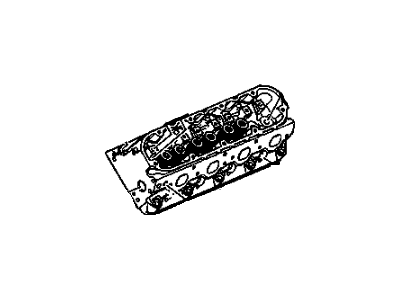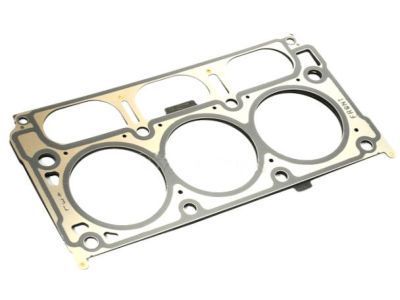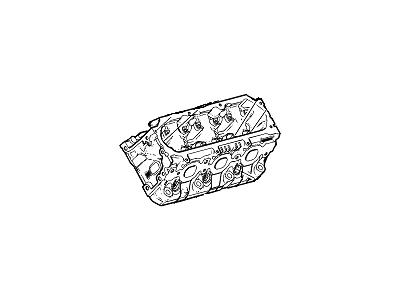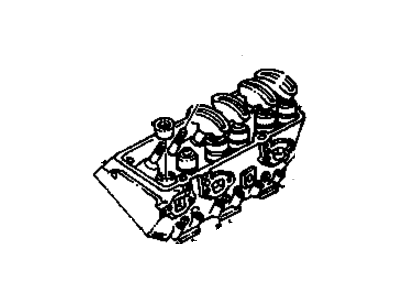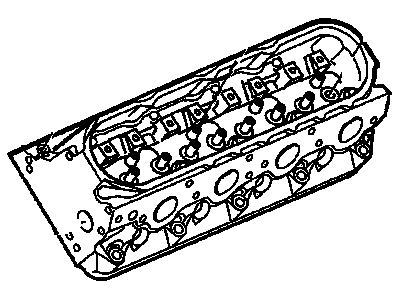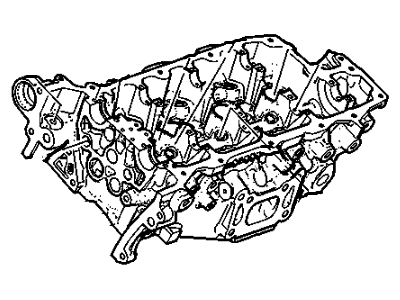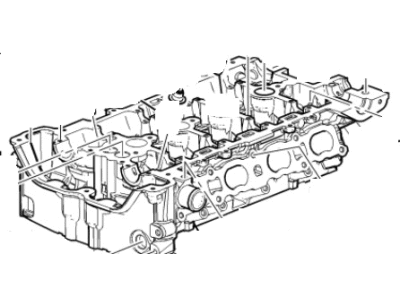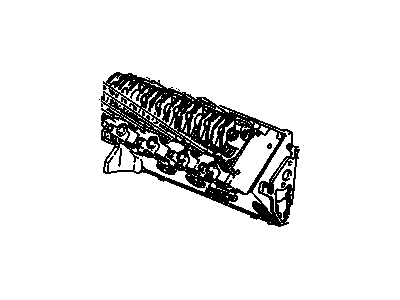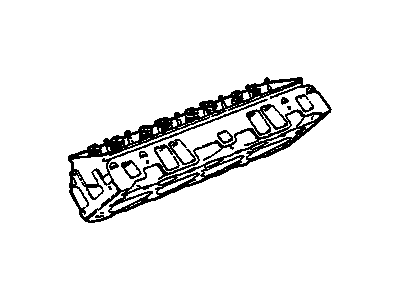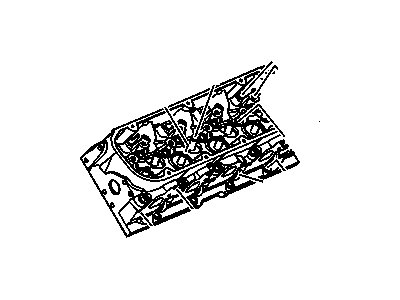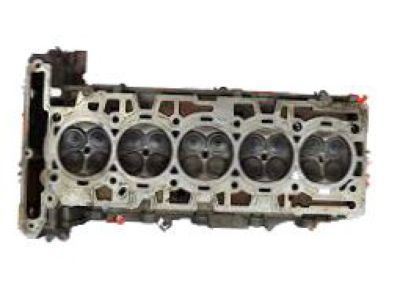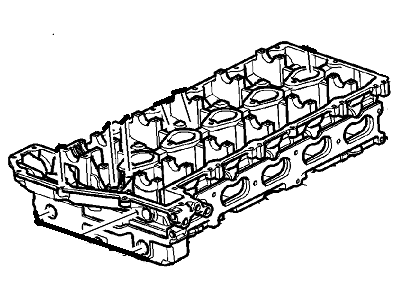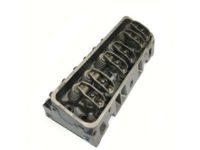
My Garage
My Account
Cart
Genuine GMC Cylinder Head
Head- Select Vehicle by Model
- Select Vehicle by VIN
Select Vehicle by Model
orMake
Model
Year
Select Vehicle by VIN
For the most accurate results, select vehicle by your VIN (Vehicle Identification Number).
113 Cylinder Heads found
GMC Head Assembly, Cyl (W/ Valve)
Part Number: 12629058$1239.44 MSRP: $2048.32You Save: $808.88 (40%)Ships in 1-2 Business DaysProduct Specifications- Other Name: HEAD, Engine Cylinder; Cylinder Head
- Replaced by: 12746921
GMC Cylinder Head Assembly
Part Number: 12629342$472.42 MSRP: $800.79You Save: $328.37 (42%)Ships in 1-3 Business DaysProduct Specifications- Other Name: Head Assembly, Cyl; Cylinder Head
- Replaced by: 12677840
GMC Cylinder Head & Stud Kit, 4.3Z
Part Number: 12520274$685.46 MSRP: $934.39You Save: $248.93 (27%)Ships in 1-2 Business DaysProduct Specifications- Other Name: Cylinder Head
GMC Cylinder Head Assembly
Part Number: 12581476$761.70 MSRP: $984.75You Save: $223.05 (23%)Ships in 1-3 Business DaysProduct Specifications- Other Name: Head Assembly, Cyl ; Head, Engine Cylinder; Cylinder Head
- Product Specifications
- Other Name: Cylinder Head
- Replaces: 12629062, 12629064, 12582713, 12615355
GMC Head Assembly, Cyl (W/ Vlv)
Part Number: 12677840$472.42 MSRP: $800.79You Save: $328.37 (42%)Ships in 1-3 Business DaysProduct Specifications- Other Name: Cylinder Head
- Replaces: 12629341, 12699615, 12629342
GMC Head Assembly,Cyl (Remanufacture) 2012, 2017 Llt Rh
Part Number: 19329674$1650.00 MSRP: $2728.26You Save: $1078.26 (40%)Ships in 1-3 Business DaysProduct Specifications- Other Name: Head Assembly,Cyl (Reman) 2012, 2017 Llt Rh
- Product Specifications
- Other Name: Cylinder Head
- Replaces: 12678972, 12620544, 12678633, 12620545
GMC Cylinder Head Assembly (W/ Valve)
Part Number: 12684222$751.89 MSRP: $1193.49You Save: $441.60 (37%)Ships in 1-3 Business DaysProduct Specifications- Other Name: Head Assembly, Cyl (W/ Vlv); Cylinder Head
- Replaces: 12668131
- Product Specifications
- Other Name: Cylinder Head
- Replaces: 12679109, 12679457, 12677521, 12668132, 12673745
GMC Head Assembly, Cyl (W/ Vlv)
Part Number: 12698290$291.63 MSRP: $460.92You Save: $169.29 (37%)Ships in 1-3 Business DaysProduct Specifications- Other Name: Cylinder Head
GMC Cylinder Head Assembly (W/ Valve)
Part Number: 12679101$748.53 MSRP: $1185.92You Save: $437.39 (37%)Ships in 1-3 Business DaysProduct Specifications- Other Name: Head Assembly, Cyl (W/ Valve); Cylinder Head
- Replaces: 12635547
GMC Cylinder Head Assembly (Machining)
Part Number: 12608280$702.44 MSRP: $1428.81You Save: $726.37 (51%)Ships in 1-3 Business DaysProduct Specifications- Other Name: Head Assembly, Cyl (Machining); Cylinder Head
- Replaces: 12634128
GMC Cylinder Head Assembly (W/ Valve)
Part Number: 55504792$622.09 MSRP: $987.68You Save: $365.59 (38%)Ships in 1-3 Business DaysProduct Specifications- Other Name: Head Assembly, Cyl (W/ Vlv); Cylinder Head
- Replaced by: 12729488
GMC Cylinder Head Assembly
Part Number: 12533542$1437.30 MSRP: $2281.97You Save: $844.67 (38%)Ships in 1-3 Business DaysProduct Specifications- Other Name: Head Asm,Cyl ; Head, Engine Cylinder; Cylinder Head
GMC Head Assembly, Cyl (W/ Vlv)
Part Number: 12691728$714.79 MSRP: $862.50You Save: $147.71 (18%)Ships in 1-3 Business DaysProduct Specifications- Replaced by: 19436449
- Replaces: 12558060, 12529093
GMC Engine Cylinder Head
Part Number: 12562319$473.06 MSRP: $751.05You Save: $277.99 (38%)Ships in 1-3 Business DaysProduct Specifications- Other Name: Head,Cyl; Cylinder Head
GMC Cylinder Head Assembly (W/ Valve)
Part Number: 19206642$1119.44 MSRP: $1774.79You Save: $655.35 (37%)Product Specifications- Other Name: Head Asm,Cyl (W/ Valve) ; Head, Engine Cylinder
- Product Specifications
- Other Name: Head,Cyl (W/Studs); Cylinder Head
- Product Specifications
- Other Name: Cylinder Head
- Replaced by: 12724880
- Replaces: 12677841, 12620209
| Page 1 of 6 |Next >
1-20 of 113 Results
GMC Cylinder Head
You're in the right place for budget-friendly OEM GMC Cylinder Heads. Our extensive catalog features genuine GMC Cylinder Heads, each backed by a manufacturer's warranty and guaranteeing superior quality, dependability, and longevity. Discover how shopping with us can save you both time and money when investing in our auto parts.
GMC Cylinder Head Parts Questions & Experts Answers
- Q: What steps should be taken for thorough cleaning and inspection of the cylinder head and valvetrain components during an engine overhaul on GMC Jimmy?A:When you remove the cylinder head for cleaning, it is advisable to clean also the other valvetrain related parts and then inspect them so that you determine how much work has to be done on the valves during the overall engine rebuilding process. To prepare the surfaces, first remove all matted deposits of gasket and sealing compound from the head gasket, intake manifold and exhaust manifold contacting surfaces with a dull scraper for the gaskets and gasket removal solvent; do not attempt to use power tools or old-fashioned metal scraper that can scratch the surface of the machined parts. Scrape off the deposits formed round the coolant passages and scrub the oil holes by using stiff wire brush. Small threads allow for a suitable size tap to be fitted in each threaded hole to remove rust and the thread sealant; use compressed air to blow any debris if available. Use die to clean all the threads of the exhaust and intake manifold studs and use wire brush on all the rocker-arm stud threads. Wash the cylinder head with the solvent and make sure that you dry the parts properly, use a compressed air to help you hasten the process. The concept of decarbonising chemicals may be relevant but has to be approached cautiously. With solvent, clean rocker arms, pivot ball and push rods. Wipe off dry then proceed to clean each and every valve spring, keepers, retainers, rotators, shields and spring seat one valve at a time so as not to mix them. Remove thick and thick rust from the control valves and use a motor wire brush for the heads and stems of the valves, but should not mix them. Check the head and the block for cracks, leaks of the coolant, and other mechanical problems; if necessary, change the head. To determine if this surface is warped beyond limits, place a straight edge on the face of the gasket mating surface and use feeler gauges to measure the warp, and if yes resurface. Intensively check valve seats for pitting, crack out, burnt area so it may require professional service. It is essential to check the inside diameter of the valve guides then measure them to compute valve stem-to-guide clearances with a view of defining where reconditioning or replacement is necessary. A study of the rocker arm faces will reveal excessive wear, the ends of the push rods for scuffing while rolling them over a flat surface will reveal bending. For each valve face look for the cracks, pits, burned spots, the condition of the valve stem and the neck must be checked for the cracks and excessive wear. Check the width of the valve margin and compare it to the recommended width and supply broader ones if the valve margins are narrow. Take measurements on the valve stem to establish the valve stem to guide bore to ascertain if the steps of reconditioning the valve will be necessary or not. To do this look for wear and pitting on the lower ends of the valve spring, examine their free length prescried by the manufacture's manual and lastly make sure they are at right angles to the cylinder head. Check spring retainers and keepers for signs of wear or cracks and replace any worn out part. If an inspection reveals that they are in rather poor condition and show signs of excessive wear, then reinsert the valves in the cylinder head and operate them in accord with recommendations on valve maintenance. Unless certain of greatly worn valve and guide contact areas or valve faces and their seats are found to be worn, the valvetrain components should not require major service but the valve could be had recooked up, for new-like specifications, if engine has high mileage and is being build up to new standards at automotive machine shops.
Related GMC Parts
Browse by Model
Acadia Cylinder Head C1500 Cylinder Head C2500 Cylinder Head C3500 Cylinder Head Canyon Cylinder Head Envoy Cylinder Head G1500 Cylinder Head G2500 Cylinder Head G3500 Cylinder Head Jimmy Cylinder Head K1500 Cylinder Head K2500 Cylinder Head K3500 Cylinder Head P2500 Cylinder Head P3500 Cylinder Head R1500 Cylinder Head R2500 Cylinder Head R3500 Cylinder Head S15 Cylinder Head Safari Cylinder Head Savana Cylinder Head Sierra Cylinder Head Sonoma Cylinder Head Suburban Cylinder Head Syclone Cylinder Head Terrain Cylinder Head Typhoon Cylinder Head V1500 Cylinder Head V2500 Cylinder Head V3500 Cylinder Head Yukon Cylinder Head
